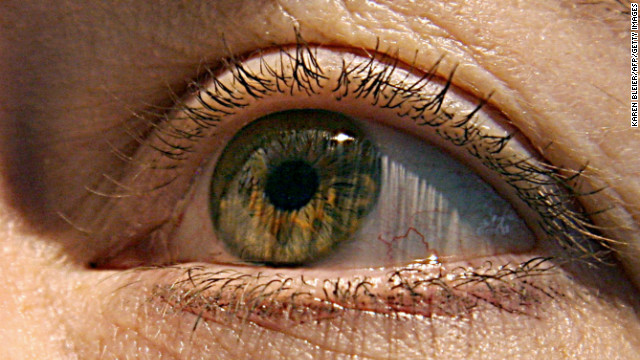Current Challenges in the Treatment of Retinitis Pigmentosa
CHMT Research Department

Retinitis pigmentosa (RP) represents a rare and severely debilitating group of disorders affecting vision that have a genetic background and are slowly progressive by nature (1). Despite the continuing efforts of the scientific community directed towards the understanding and treatment of the disease, RP still remains incurable. Management of RP was investigated in various preclinical models, as well as in numerous clinical trials on humans in the United States, however, the effective and safe solution to this problem was not yet found.
Retinitis pigmentosa causes a progressive and irreversible vision damage caused by deterioration of photosensitive cells (especially rods) in the retina (2). Early symptoms usually represent the loss of the peripheral visual field, followed by further vision narrowing, which may eventually result in complete blindness. Treatment options in the United States are currently quite limited. The management of RP mostly includes vitamin supplementation, aiming to hold off the progression of the degenerative process. However, even vitamin supplementation, besides its’ limited effectiveness, has its safety concerns. Vitamin A supplementation is not recommended in certain individuals since it may cause fertility issues and severe osteoporosis (3). Preventative measures, such as avoiding light exposure in the early phases of the disease did not prove to be highly effective.
When reviewing the current treatment options, it seems that RP still represents a challenging task. In order to improve the quality of life of patients suffering from this degenerative and progressive disorder, Cuban experts have developed a sophisticated and effective method for the management of RP.
Solution Offered by Cuban Experts
The main treatment objective is to limit the disease progression by improving the vascularization of the
retina. The management of RP in Cuba practiced now, that is focused on eye vascularization, has been
developed and improved for more than two decades. The milestone of therapy is to bring as much blood,
oxygen, and nutrients as possible to the eye. This is being performed by encouraging the development of blood vessels.
There have been some attempts in Russia to transplant the stem cells that would develop into the healthy retinal tissue, however, scientists were mostly frustrated by failure since the stem cells could not successfully engraft due to the lack of the healthy vascular supply (4). Cells remodeling was also attempted; however, this study was suspended due to the lack of efficacy. Cuba offers a sustainable treatment option that focuses on limiting or completely inhibiting the progression of degenerative vascular changes in the retina. There are several treatment approaches that are being applied to the overall management plan. They include eye surgery, ozone therapy, electrostimulation and drugs (5).
Micro-surgery
A very sophisticated and unique surgical technique is used to increase the blood flow within the part of the eye responsible for providing blood supply to the retina. When this technique is performed, retina remains adequately nourished and oxygenated. This allows normal retinal function and prevents further deterioration of vision. By stimulating the blood flow within the retina, visual acuity increases, and retina is encouraged to grow, and not deteriorate. The final result is stabilization of the disease and rapid improvement in both central and peripheral vision (6). Ophthalmologists from all over the world refer their patients to Cuba, for this surgery to be performed due to its’ efficacy and safety.
Ozonotherapy
It has been recognized that ozone improves cell metabolism, boosts the cell energy levels and exhibits antioxidant properties (7). The ozone is either administered rectally or being injected into the bloodstream.
Ozone provides detoxification effects by blocking the harmful lipid peroxidation that occurs in retinal cells affected with retinitis pigmentosa. The ozonotherapy also promotes the blood flow surrounding retina, thereby directly improving the retinal function. In order to ensure the best possible results, the patient should receive 14 cycles of treatment during the course of the whole therapy.
Electro-stimulation
Electrical stimulation produces a micro-massage effect that stimulates micro-circulation and lymphatic drainage. These effects promote electro-ionic balance and provide an additive effect to the ozonotherapy (8).
This method has demonstrated a high efficacy. Another benefit of this treatment modality includes reinforcing the process of the perception of visual stimuli within the brain. The electro-stimulation includes the application of pleasant therapeutic electrical currents on the head, neck, soles of the feet, and palms of the hands. For the complete and best possible effect, 10-15 treatment sessions are needed to be performed. During the full treatment course, drugs including immune-modulators, oxide-reductive substances, minerals, and vitamins are administered to boost the treatment effects.
Clinical Trials
Cuban scientists investigated the effects of ozone treatment on the visual field in participants that had retinitis pigmentosa. This was a controlled, randomized and double-blind study, with the study design that ensures a high level of evidence. 68 participants were enrolled in the trial. Half of the subjects received ozone treatment, while the other half received placebo. The study demonstrated that three times more subjects in the ozone group experienced a significant improvement in the visual field, compared to those who received placebo. Subjects with early stages of the disease experienced greater improvement with more long-lasting effects, which underlines the importance of early intervention. Subjects at early phases of the disease also experienced more stable and sustainable treatment effects. In conclusion, this study showed that ozone treatment had beneficial effects on patients with RP.
Another double-blind, placebo-controlled study also evaluated the effects of ozone treatment in patients with retinitis pigmentosa. This study had an even greater number of participants (168). This study also
demonstrated the significant improvement in patients treated with ozone therapy compared to patients that received placebo. Interestingly, approximately a half of the patients that had treatment response also succeeded to maintain the response for the longer period of time (9).
A study that investigated the redox-balance in patients with RP receiving ozone treatment concluded that ozone therapy represents a safe therapeutic modality since no side effects related to treatment were observed during the course of the trial. Therefore, ozone therapy can be safely administered to patients with RP without any risk of side effects (10).
Conclusion
Treatment of RP still represents a challenging task in the western countries. Vitamin supplements and avoiding excessive light are just not sufficient enough to provide any benefit to patients suffering from this severely debilitating illness. Various treatment approaches including stem cells transplantation and remodeling of the retinal cells have failed to demonstrate effectiveness. Stem cells failed to engraft, and retinal cell remodeling was not possible both because of the vascularization impairment that occurs in this serious illness. Cuban researchers and medical experts decided to target exactly this disease characteristic by improving the blood flow in the eye, which allows retina to properly function. Improvement of eye circulation ensures the adequate oxygenation of retinal tissue and postpones or completely stops the degenerative processes within the retina. Clinical trials and plenty of satisfied patients worldwide guarantee treatment success. Thousands of international patients referred to Cuba for the treatment of RP have experienced benefits following treatment. Clinics in Cuba still represent the only hope for people suffering from this genetic disorder. Cuban experts have found a solution to postpone or completely stop the development of the negative effects on the quality of life of patients suffering from RP.
References:
Baumgartner, W. (2000). Etiology, pathogenesis, and experimental treatment of retinitis pigmentosa.
Medical Hypotheses, 54(5), 814-824.
Medline Plus Encyclopedia. Retrieved on July 1st, 2018, from
http://www.nlm.nih.gov/medlineplus/ency/article/001029.htm
Jayashree N Sahni et al. (2011). Therapeutic Challenges to Retinitis Pigmentosa: From Neuroprotection to Gene Therapy. Curr Genomics. 12(4): 276–284.
Health Services International (Servimed) Inc. Retrieved on July 1st 2018, from http://www.healthservicecuba.com/retinitis-pigmentosa/ Centro Internacional de Retinosis Pigmentaria Camilio Cienfuegos de Cuba. Tratamiento cubano para la Retinosis Pigmentaria. Retrieved on July 1st, 2018, from http://www.infomed.sld.cu/instituciones/retinosis/quienesomos/quienesomos.html
Garcia Layana, A. (2003). La cirugía de la retinosis pigmentaria en Cuba. Communication presented at
Archivos de la Sociedad Española de Oftalmología, Madrid.
Copello, M., Eguía, F., Menéndez, S., & Menéndez, N. (2003). Ozone Therapy in Patients with Retinitis Pigmentosa. Ozone: Science & Engineering, 25(3), 223-232.
Berson, E., Remulla, J., Rosner, B., Sandberg, M., & Weigel-DiFranco, C. (1996). Evaluation of patients with retinitis pigmentosa receiving electric stimulation, ozonated blood, and ocular surgery in Cuba. Arch Ophthalmol, 114(5), 560-563.
Pérez, L. J. (2004). Ozone therapy in retinitis pigmentosa. Communication presented at 4th International Symposia on Ozone Applications, Cuba.
Menéndez, S., Hernández, F., & Copello, M. (2004). Ozone therapy and redox balance in patients with Retinitis Pigmentosa. Communication presented at 4th International Symposia on Ozone Applications.

